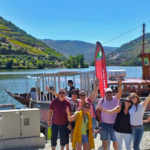In the heart of Porto, the historic center reveals the soul of the city
We have prepared a tour of Porto, the 2nd largest city in Portugal and considered the “Capital of the North”. One of Europe’s tourism capitals, classified as a UNESCO World Heritage Site and winner of the Best European Destination and Best City-Break Destination in Europe awards. A perfect combination of the 1000 thousand year old historic center, taking you from the river to the Atlantic Ocean and modern neighborhoods.
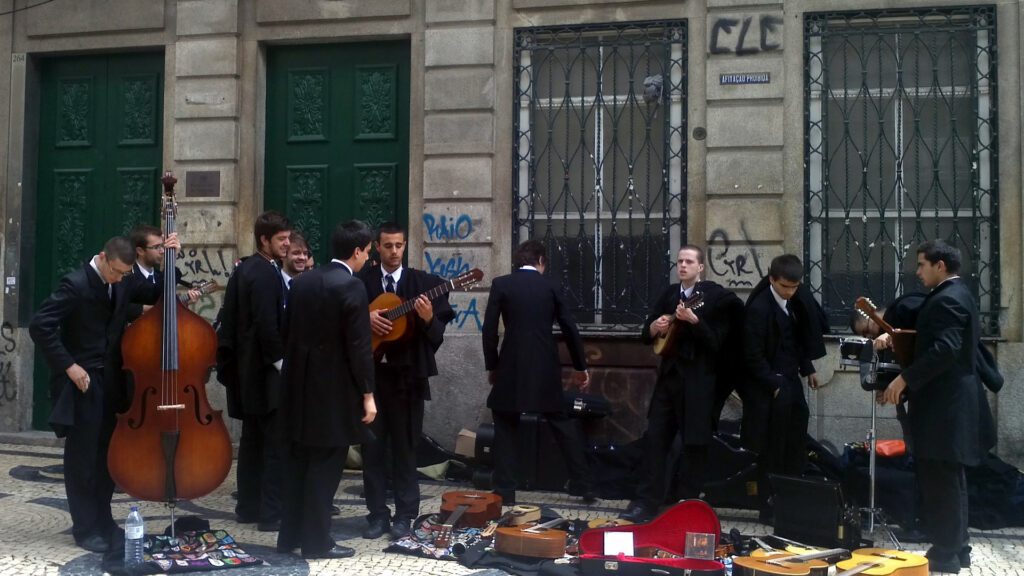
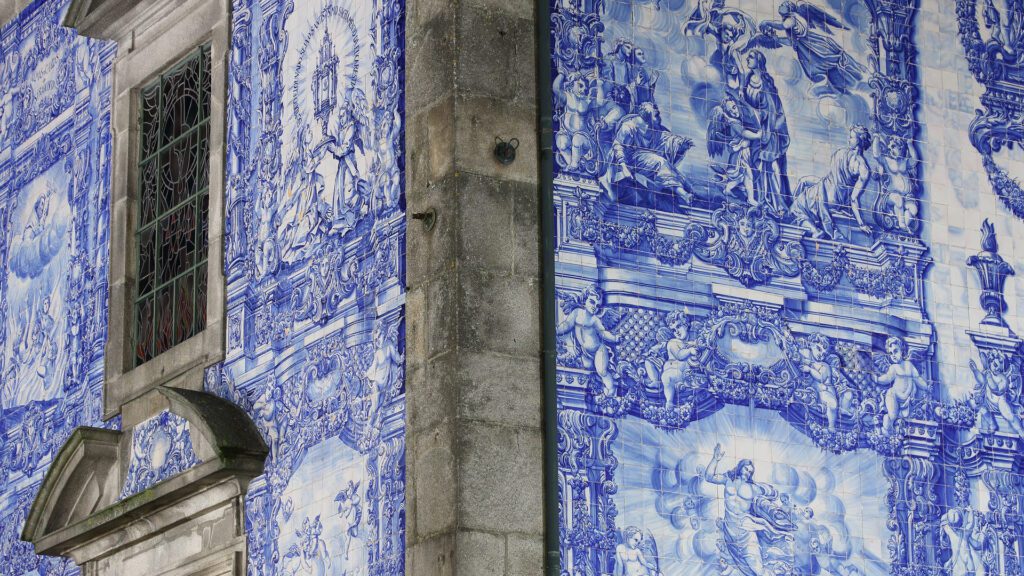
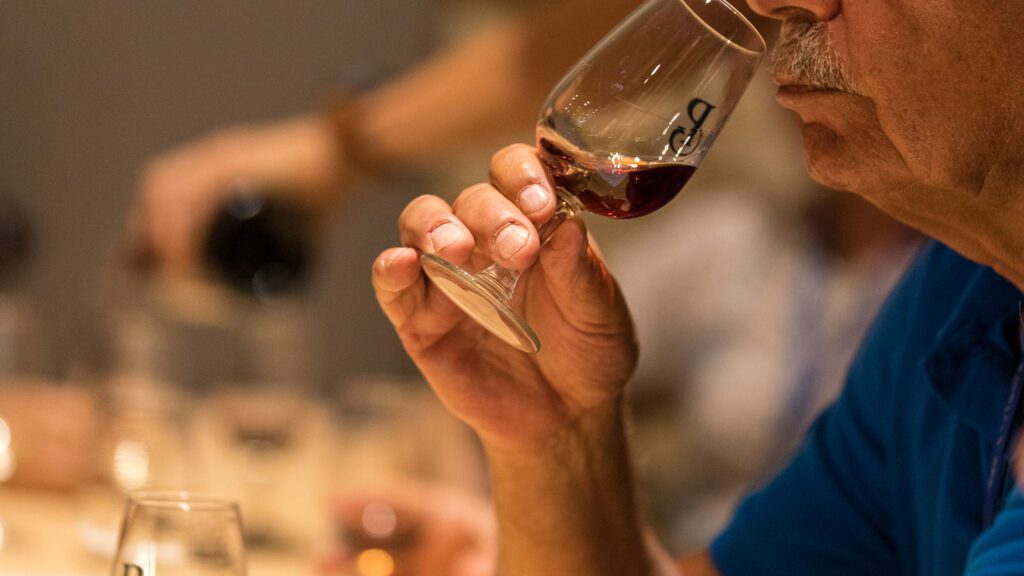
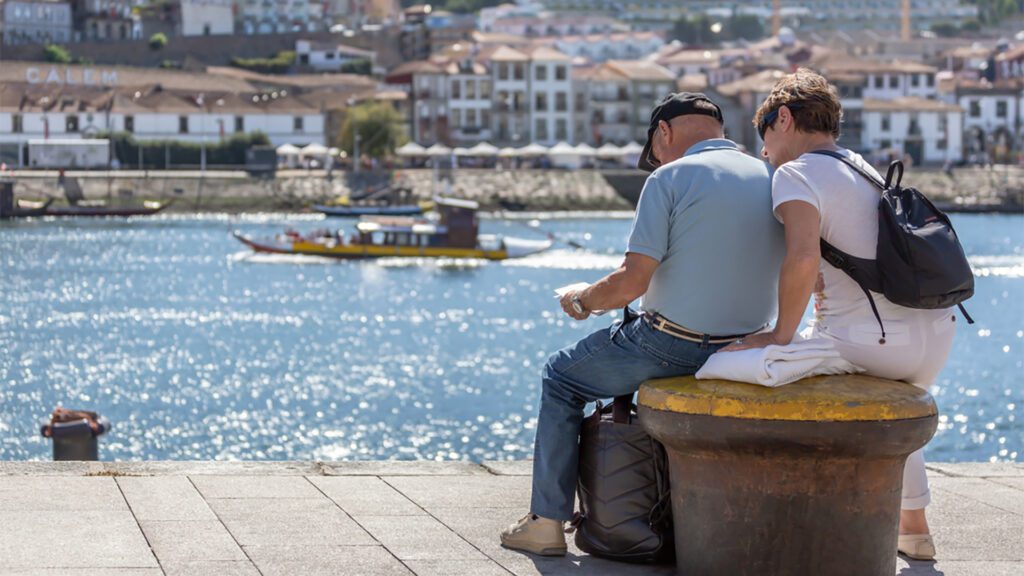
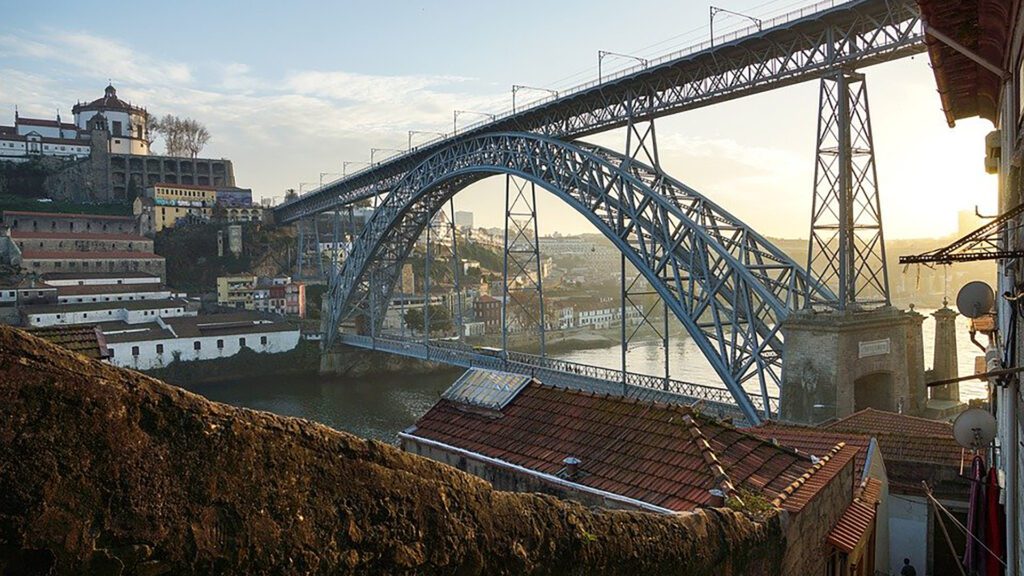
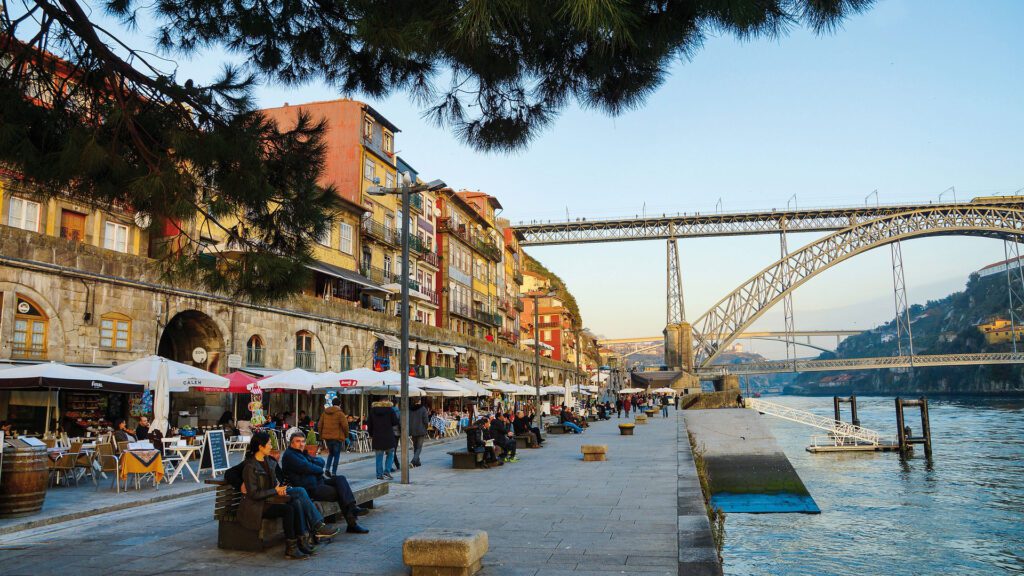
01. Chapel of the Souls
The Capela das Almas is one of the most photographed buildings in Porto. Located in the heart of Baixa, it features a stunning façade lined with 15,947 beautiful tiles. Originally, the chapel was a wooden structure dedicated to Saint Catherine. In the 18th century, the “Irmandade das Almas e Chagas de São Francisco” rebuilt it after moving from the Monastery of Santa Clara. Since then, it has been popularly known as the “Capela das Almas.”

02. Café Majestic
Opened in 1921, this historic café on Rua de Santa Catarina quickly became a gathering place for high society and celebrities. They came to meet, socialize, and hold events in its unique “Belle Époque” setting. It is considered the most stunning of all Portuguese cafés and one of the most attractive in the world.

03. Latina Bookshop
Livraria Latina is one of the most emblematic bookstores in Porto. Founded in 1942, it boasts a façade featuring a bust of Luís de Camões, regarded as the greatest poet of Portugal and the Portuguese language. His mastery of poetry rivals that of Shakespeare, Vondel, Homer, Virgil, and Dante. He is best remembered for his epic work, often considered the “Portuguese Diaspora.”
04. São Bento Station
This train station is located in the Historic Center of Porto, a UNESCO World Heritage Site and National Monument. Built on the ruins of a former convent (hence the name “São Bento”), it saw its first train depart in 1896. However, the building was only inaugurated in 1916 after the completion of the atrium. Its murals, made up of more than 20,000 tiles, depict moments in Portugal’s history as well as rural scenes and traditions from the north of the country.
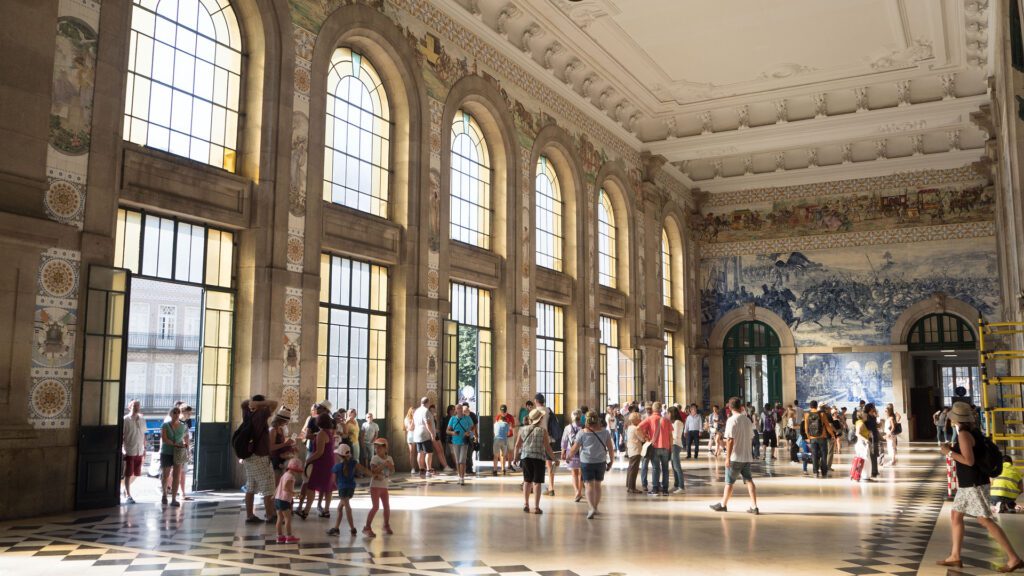
05. Rua do Chá Fountain
Tea is a product that has been around for millennia. The oldest reference to tea is from a Chinese emperor, Shen Nung, in 2750 BC. In the 16th century, Portuguese explorers discovered the Tea Route, its preparation techniques and customs, and brought it to Portugal. However, Portugal and Spain went to war at this time, which allowed the Netherlands to hone this business very successfully and expand it across Europe. The most curious thing is that Princess Catarina de Bragança, daughter of King João IV of Portugal, a fervent fan of this drink, was responsible for promoting the famous consumption of “5 o’clock tea” in England, when she married King Charles II in 1662. Of all the countries in Europe, England was the most fond of this drink.
06. Guindais funicular
Raul Mesnier designed the original funicular during the Industrial Revolution, a time of great wealth for Porto. However, a serious accident on June 5, 1893, led to its closure. Mesnier completely redesigned it in an attempt to resume operations, but the confusing and violent political and social environment of the late 19th century prevented this. As a result, the funicular remained inactive until 2001. Later, as part of Porto’s urban regeneration for the European Capital of Culture (2001), a new funicular replaced the original at the same location. Of the original equipment and system, only the first construction of the engine room remains.
07. Fernandina Wall
Porto was under constant threat from pirate and Castilian armies from the 12th to the 14th century. Thus, the reconstruction of the old walls of the Sueve began in 1336. But neither King Afonso IV nor his son Pedro I managed to complete them. Therefore, 31 years after the start of construction, when King Ferdinand was crowned, he immediately ordered the work to be restarted. To do this, he relied on local residents and money from the council. All the inhabitants of the city contributed equally. Those who could not pay with money worked in construction. By 1376 the extension of the wall had been completed. Thus, the people of Porto gave it the name “Fernandina Wall”, the name of the king.
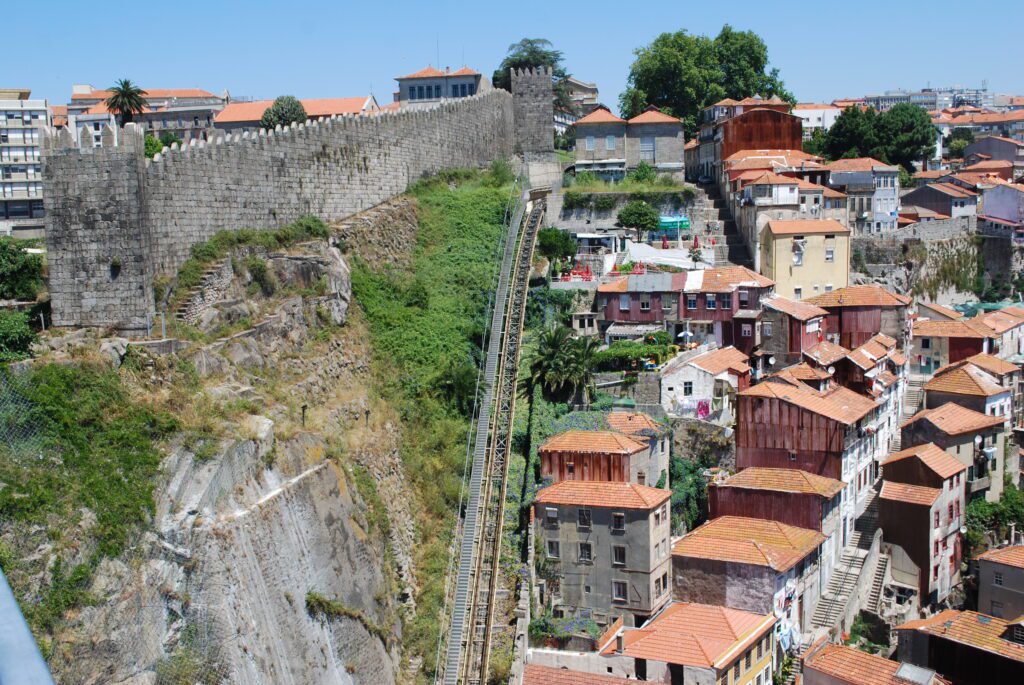
08. Porto Cathedral
The construction of the Cathedral of Porto began in the 12th century, but only ended in the 13th century. In the following century, the cloister was added, built in Gothic style, similar to the tomb of the knight João Gordo in the chapel of São João Evangelista. Still in the 14th century, the kings D. João I and D. Filipa de Lencastre were married in the Cathedral of Porto, a great event for the history of the city. Later, in the 17th and 18th centuries, the Baroque style was added, such as the front portal (which still preserves the medieval rose window). The north façade and several other places, such as the chancel and the chapel of the Blessed Sacrament, also date from this period and have since housed a large silver altarpiece inside the cathedral church.

09. Luiz I Bridge
The Luis I Bridge is an ex-libris of the city and is part of the area classified as a UNESCO World Heritage Site, since 1996. The construction was awarded in 1881 to the Belgian company “Société Willebreck”, which the administrator was Théophile Seyrig, a disciple of Gustave Eiffel and author of the design of the new bridge. Work began that same year and continued until 1887 when the two levels of the bridge were finally completed. Its arch is 172m long, the upper deck is 392m long and the lower deck is 174m long.

10. Serra do Pilar Monastery
Construction of the first monastery began in 1538 and was completed in 1583. The new circular church was inaugurated on July 17, 1672. The final phases of the monastery were completed in the late 17th century. The military importance of Serra do Pilar first became apparent during the Peninsular War (Napoleon’s Invasions) and the monastery’s prominent location acted as the only liberal stronghold on the south side of the Douro during the Siege of Porto (1832-33). In 1910, the site was declared a National Monument and is also listed as a UNESCO World Heritage Site. In 1947, some of the monastery grounds were converted into military barracks which remain in place today. Since the late 20th century, the monastery and gardens have been open to the public and the church continues to hold Sunday mass.

How well do you know the center of Porto and all these places we present to you? See our article on “Places to visit less than half an hour from Porto” and discover Maia.

